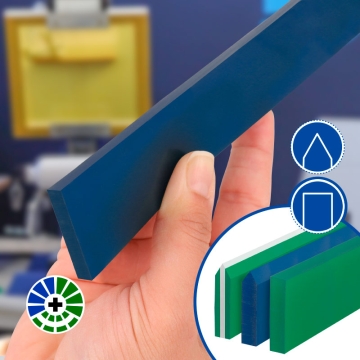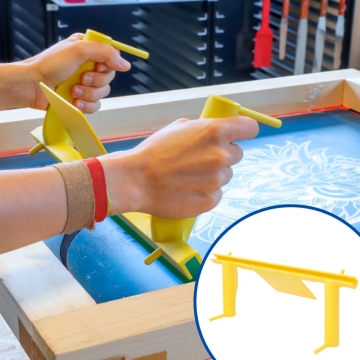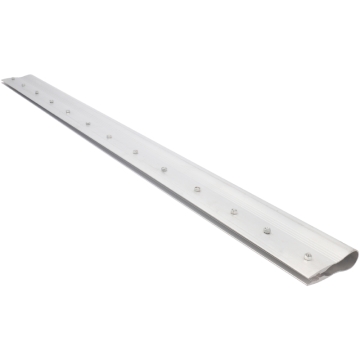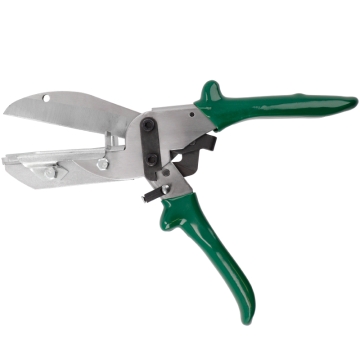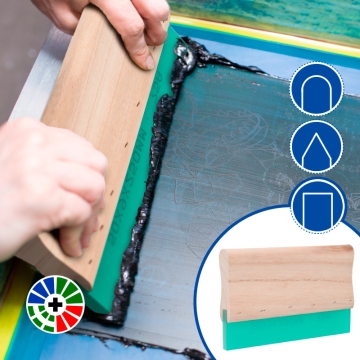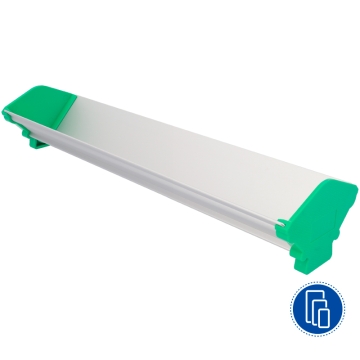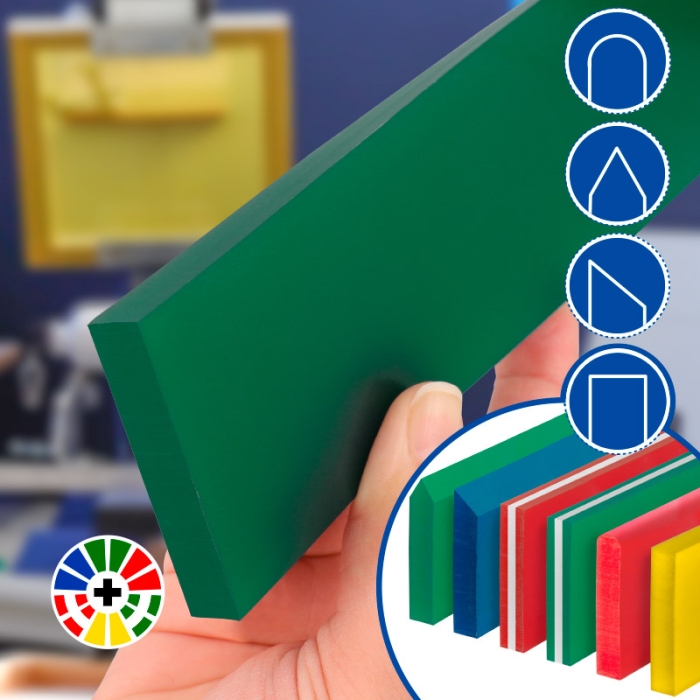
Screen Printing Squeegee Rubber - 9x50mm
High-quality polyurethane rubber for screen printing squeegees. Suitable for all types and sizes of squeegees, both for manual and automatic use.
- Available in hardness levels of: 65, 65/90/65, 75, 75/95/75, 85 and 90 shores A
- Profile options: straight (P0), round (P3), lance (P5) or 45º (P6)
- Squeegee with 9 mm thickness and 50 mm width

Related Products
More information about the Screen Printing Squeegee Rubber
INDEX
DESCRIPTION
- Replacement for screen printing squeegees or scrapers
- Offers great resistance to abrasion and chemicals
- In Related Products you will find rubbers with a blade of 5x25mm (Ref. 944277)
- Available in 5 hardness levels to choose from:
- Red: soft => 65 shores
- Red/white/red: soft => 65/90/65 shores
- Green: medium or semi-hard => 75 shores
- Green/white/green: triple layer medium or semi-hard => 75/95/75 shores
- Blue: hard => 85 shores
- Yellow: hard => 90 shores
WHICH RUBBER TO CHOOSE?
STEP 1. CHOOSE THE HARDNESS
Hardness is measured by the Shore A scale. We offer 5 durometers to meet the needs of screen printing: 65, 65/90/65, 75, 75/95/75, 85, and 90.
- For designs that require a lot of ink such as saturated backgrounds, opacities, or highly coloured images, choose the soft rubber (65 shores). It is also the one to use for printing on irregular or cylindrical surfaces due to its flexibility
- To achieve greater stability in printing designs that require a thick layer of ink, use a triple layer rubber with soft hardness (65/90/65 shores). The central section of 90 shores provides rigidity and prevents bending, while the soft 65 shore edges facilitate movement over the screen
- For jobs that do not require special effects, use the medium or semi-hard rubber (75 shores). It is also highly recommended for non-absorbent materials
- To achieve greater stability in jobs that do not require special details, opt for a triple layer rubber with medium hardness (75/95/75 shores). The central section of 95 shores provides rigidity and prevents bending, while the 75 shore edges facilitate movement over the screen
- If you want to print designs that require greater precision such as details, fine lines, or small patterns, use a hard rubber (85 or 90 shores). Due to its rigidity, it is also the most suitable for viscous inks like plastisols or UV
STEP 2. CHOOSE THE PROFILE
The profile, edge, or blade angle of the rubber determines the thickness of the ink layer and the image definition. A blunt or rounded edge allows more ink to pass through than a rectangular one.
- The straight profile (P0) is suitable for printing on rigid and flat surfaces such as paper, wood, cardboard...
- For textile printing, opt for a rounded or blunt edge (P3) with soft hardness. It is also very useful for absorbent materials
- If you want to print on non-absorbent materials, irregular surfaces, or cylindrical shapes, opt for the spearhead or double bevel (P5). It is also very useful for printing details or fine lines on textiles
- Use the 45º bevelled edge (P6) for non-absorbent or hard materials such as metal, glass, ceramics, plastic...
MAINTENANCE RECOMMENDATIONS
- Frequently alternate the direction in which you use the rubber to extend its lifespan
- If it is to be stored for a long period, it is recommended to store the rubber flat and not rolled up
- Keep it away from excessively hot or humid environments
| Ref. | 944570 |
|---|
Reviews
Share your opinion
It will only take a minute, and your opinion can help other customers.
Sign in to submit your review
Write a review
Rating
Add photos of your product (optional)
Sending review...
Error
Review sent Thank you for your interest!
Questions
No questions found for this product.
Be the first to ask a question!
Ask a question
Please complete the CAPTCHA
Submitting your question...
Error
Question Submitted Thank you for your interest!

